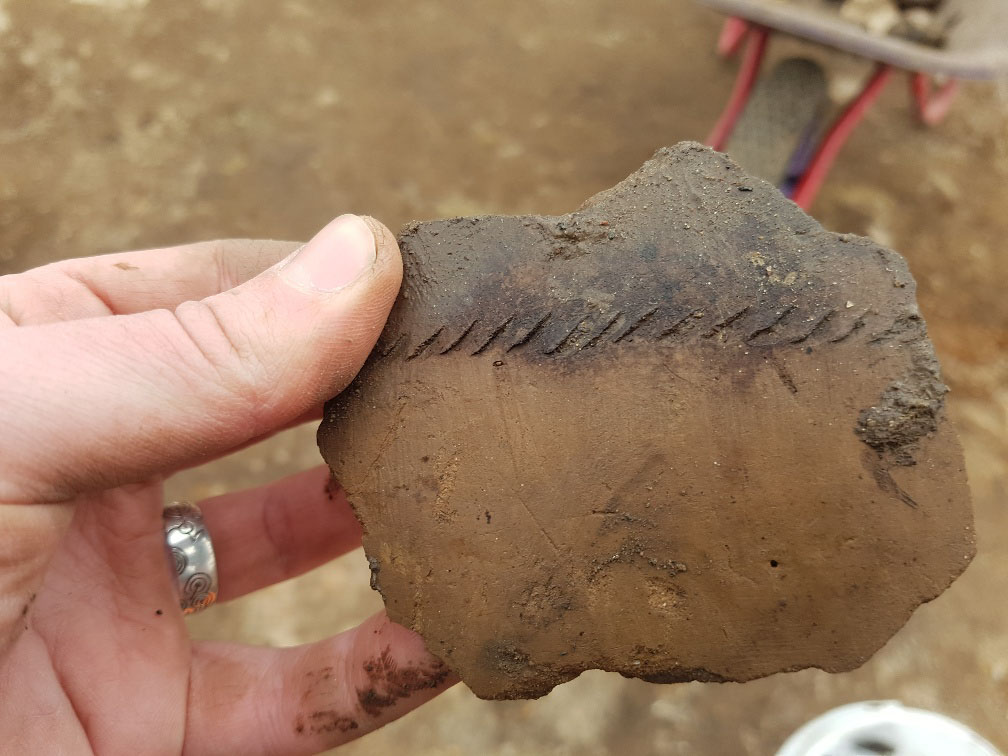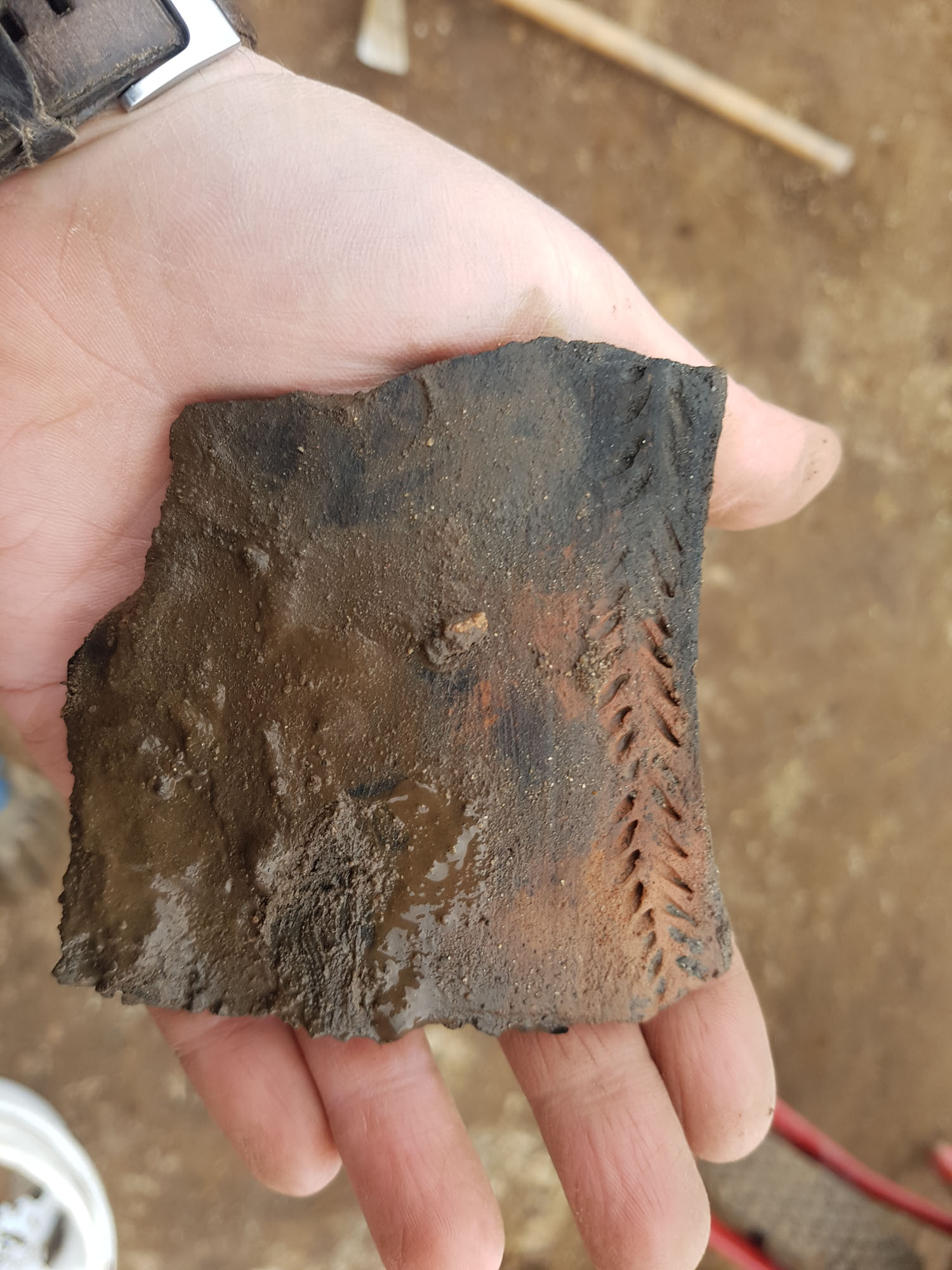For a local resident of Cnoc Ard (Knockaird) on the Isle of Lewis, a surprise was in store during the construction of their new house. While excavating the foundations, they uncovered a Late Iron Age souterrain, a subterranean stone structure probably used for food storage.
In 2018 AOC Archaeology were called in to conduct a rescue excavation of the souterrain. The works were funded by Comhairle nan Eilean Siar (Western Isles Council).
What is a souterrain?
The word souterrain comes from the French sous terrain, meaning ‘underground’. Souterrains are subterranean structures, usually built from timber or stone, often forming a curving underground passage or chamber. They are generally thought to have been storage chambers associated with domestic settlement, with the dark, cool environment ideal for the preservation of dairy and meat produce. Another theory suggests they were used as hiding places during turbulent times.
Souterrains are found across Europe and Scotland, typically dating to the Iron Age. In the Western Isles, there are 82 known souterrains, many found in proximity to Atlantic wheelhouses. Few have been excavated using modern archaeological methods, meaning the Knockaird Souterrain offered an exciting opportunity to investigate one of these structures.
Knockaird Souterrain
The souterrain at Knockaird comprised a curvilinear, stone-built structure aligned northwest-southeast, measuring overall 6.6m long, 1.2m wide and up to 1.4m high. A shallow entrance pit, roughly revetted with stone, allowed access to three stone steps, which led into the entrance passage. The passage walls were well-constructed, lined with corbelled drystone walling built with small sandstone slabs and capped with lintels.
A doorway, built with upright slabs supporting the lintel stones, connected the passage to the main chamber, which was also constructed with similar drystone walling. While the main chamber was substantially waterlogged, it contained an organic-rich silt base layer. A radiocarbon date recovered from the base of the souterrain suggests it was in use during the Late Iron Age (168 cal. BC – 7 cal. AD).

explore the 3D model⚬
explore the 3D model⚬
explore the 3D model⚬
explore the 3D model⚬
explore the 3D model⚬
The Souterrain Mid-Excavation
The Souterrain Post-Excavation
Deliberate Deposits
During excavation, it was noted that the entrance steps had been purposefully filled with soil, effectively blocking the entrance. While this may suggest the entrance was blocked as a purposeful closing act for the souterrain, radiocarbon dates from this material revealed a post-medieval date. This indicates a much more recent date for the closing of the souterrain, an act that may simply have been carried out by a farmer protecting his livestock from a hole in the field.
A more likely candidate for a purposeful closing ritual for the souterrain during the Iron Age period was the abundance of pottery and stone artefacts, including quern roughouts and rubbing stones, found at the base of the steps. The practice of depositing artefacts near the souterrain entrance has been seen in several other sites in eastern Scotland.
Pottery
A total of 264 fragments of pottery were recovered from the Knockaird Souterrain! Unfortunately there were no complete vessels, but it is estimated that this represented a minimum of 23 jars. Many of the vessels were skillfully finished, and at least five of them were decorated with incised herringbone patterns on the rim or shoulder, while others had wavy cordons with diagonal incised decorations and grass wiping.
Most of the sherds had carbon present on at least one of the surfaces indicating their use with an open hearth. One of the vessels displayed signs of being used for boiling water. The lack of burnt food remnants on the pottery suggests that they were likely used for storage rather than regular cooking, supporting the theory that this was indeed a storage structure.
header image: © Colin Park





































